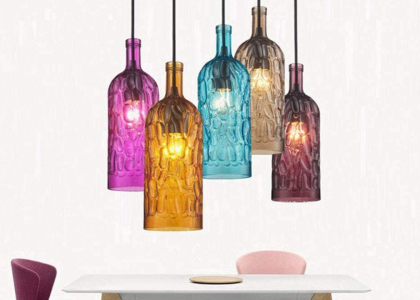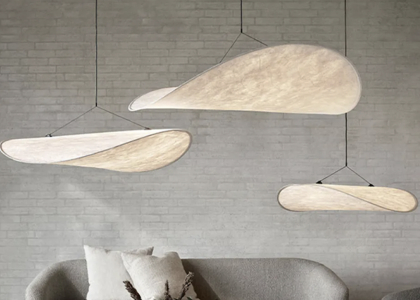The history of medieval chandeliers is a fascinating journey through time, reflecting the evolution of lighting and interior design from the early Middle Ages to the late Gothic period. Initially, chandeliers were simple wooden frames that held candles or oil lamps, serving a practical purpose in illuminating dark spaces. These early designs were often suspended from the ceilings of churches and castles, where they provided light for gatherings and ceremonies.
The use of chandeliers became more widespread as the demand for decorative lighting grew, particularly among the nobility and wealthy merchants who sought to showcase their status and taste. As the medieval period progressed, chandeliers evolved in both form and function. By the 12th century, artisans began to experiment with more intricate designs, incorporating metalwork and glass elements.
The introduction of wrought iron and bronze allowed for greater creativity, leading to elaborate shapes and ornate decorations. The Gothic style, which emerged in the 13th century, brought about a new wave of chandelier design characterized by pointed arches, intricate tracery, and a sense of verticality that mirrored the architecture of cathedrals. These chandeliers not only illuminated spaces but also became symbols of wealth and power, often adorned with precious materials and elaborate motifs that reflected the artistic trends of the time.
The Unique Design of the Elegant Curved Medieval Chandelier
The elegant curved medieval chandelier stands out for its distinctive silhouette and graceful lines, which evoke a sense of movement and fluidity. Unlike the more rigid and angular designs of earlier chandeliers, the curved form allows for a softer aesthetic that can enhance the ambiance of any room. This design often features sweeping arms that extend outward, creating a harmonious balance between functionality and artistry.
The curves can be accentuated with decorative elements such as scrollwork or floral motifs, adding an extra layer of sophistication to the piece. In addition to its visual appeal, the unique design of the curved medieval chandelier serves practical purposes as well. The arrangement of the arms allows for optimal light distribution, ensuring that spaces are well-lit without harsh shadows.
This thoughtful design is particularly important in larger rooms or halls where illumination is essential for both safety and atmosphere. Furthermore, the use of multiple candle holders or light fixtures on each arm provides versatility in lighting options, allowing users to adjust brightness according to their needs. This combination of beauty and functionality makes the elegant curved medieval chandelier a timeless choice for both historical and contemporary settings.
Materials and Craftsmanship of the Timeless Statement Piece
The materials used in crafting medieval chandeliers play a crucial role in their durability and aesthetic appeal. Traditionally, wrought iron was the primary material due to its strength and malleability, allowing artisans to create intricate designs that could withstand the test of time. Iron chandeliers were often finished with a patina or painted to enhance their visual impact, while bronze offered a more luxurious alternative that was favored by the elite.
The use of glass became increasingly popular during the later medieval period, with artisans incorporating colored or etched glass elements to add a touch of elegance and sophistication. Craftsmanship is another vital aspect that defines the quality of a medieval chandelier. Skilled blacksmiths and metalworkers dedicated themselves to perfecting their techniques, often passing down knowledge through generations.
Each chandelier was typically handcrafted, resulting in unique pieces that showcased the artisan’s skill and creativity. The intricate details found in these chandeliers—such as hand-forged scrolls, decorative finials, and elaborate candle holders—reflect a level of craftsmanship that is rarely seen in mass-produced lighting fixtures today. This dedication to artistry not only enhances the chandelier’s beauty but also contributes to its status as a timeless statement piece.
How to Incorporate the Chandelier into Modern Décor
Incorporating a medieval chandelier into modern décor can create a striking contrast that adds character and depth to contemporary spaces. One effective approach is to place the chandelier in an unexpected location, such as a minimalist dining room or an industrial-style loft. The juxtaposition of the ornate chandelier against clean lines and modern furnishings can create a visually stunning focal point that draws attention and sparks conversation.
Additionally, pairing the chandelier with modern art or sleek furniture can enhance its elegance while maintaining a balanced aesthetic. Another way to integrate a medieval chandelier into modern décor is through careful color coordination and complementary design elements. Choosing a chandelier with a finish that matches or contrasts with existing fixtures can create a cohesive look throughout the space.
For instance, a wrought iron chandelier can be paired with black or dark wood furniture to create a unified theme, while a bronze chandelier may work beautifully with warm-toned accents like gold or brass. Incorporating textiles such as rich fabrics or patterned rugs can further enhance the overall ambiance, allowing the chandelier to shine as a statement piece without overwhelming the room.
Maintenance and Care for a Medieval Chandelier
Maintaining a medieval chandelier is essential for preserving its beauty and functionality over time. Regular cleaning is necessary to prevent dust accumulation and tarnishing, which can dull its appearance. For wrought iron chandeliers, a soft cloth dampened with water or a mild cleaning solution can be used to gently wipe down surfaces.
It is important to avoid abrasive materials that could scratch or damage the finish. For chandeliers with glass components, using a glass cleaner can help restore clarity and brilliance. In addition to cleaning, periodic inspections are crucial for ensuring that all components are secure and functioning properly.
Checking for loose screws or fittings can prevent potential accidents or damage. If the chandelier uses candles, replacing them regularly will not only maintain its aesthetic appeal but also ensure optimal lighting performance. For electric chandeliers, it is advisable to check wiring connections periodically and replace bulbs as needed.
By following these maintenance tips, owners can enjoy their medieval chandeliers for many years while preserving their historical charm.
The Symbolism and Significance of Chandeliers in Medieval Times
In medieval times, chandeliers held significant symbolic meaning beyond their practical use as sources of light. They were often associated with wealth, power, and prestige, serving as status symbols for nobility and affluent households. The size and intricacy of a chandelier could indicate the social standing of its owner; larger chandeliers adorned with precious materials were typically found in grand halls or churches where they could be admired by guests and visitors alike.
Moreover, chandeliers played an important role in religious ceremonies and gatherings. In churches and cathedrals, they illuminated sacred spaces during worship services, symbolizing divine light and guidance. The presence of a chandelier in such settings was not merely functional; it represented spiritual significance and reverence for the sacred space.
The interplay of light created by these fixtures was often seen as a metaphor for enlightenment and divine presence, further enhancing their importance in medieval culture.
Where to Find and Purchase an Elegant Curved Medieval Chandelier
Finding an elegant curved medieval chandelier requires exploring various avenues that cater to both antique enthusiasts and modern buyers seeking replicas or inspired designs. Antique shops specializing in period furnishings often carry authentic medieval chandeliers that showcase historical craftsmanship. These pieces may come with unique stories attached to them, adding an extra layer of charm for collectors or those looking to make a statement in their homes.
For those interested in new designs inspired by medieval aesthetics, numerous online retailers offer a wide selection of chandeliers that capture the essence of this style while incorporating modern materials and technology. Websites dedicated to home décor often feature curated collections that include elegant curved chandeliers alongside other complementary lighting fixtures. Additionally, custom lighting designers can create bespoke pieces tailored to individual preferences, ensuring that buyers receive a unique chandelier that fits seamlessly into their décor.
The Timeless Appeal of the Medieval Chandelier in Contemporary Design
The timeless appeal of medieval chandeliers lies in their ability to transcend trends while maintaining relevance across various design styles. Their intricate craftsmanship and historical significance resonate with those who appreciate artistry and heritage in their home décor. In contemporary design contexts, these chandeliers serve as conversation starters that bridge past and present aesthetics, allowing homeowners to express their unique tastes while honoring traditional craftsmanship.
Moreover, as sustainability becomes increasingly important in design choices, investing in timeless pieces like medieval chandeliers aligns with eco-conscious values by promoting longevity over disposable trends. These fixtures are not only built to last but also carry stories from centuries past that enrich modern living spaces. As such, they continue to captivate designers and homeowners alike, proving that elegance rooted in history can seamlessly integrate into today’s diverse design landscape.



